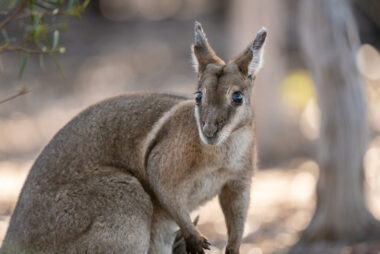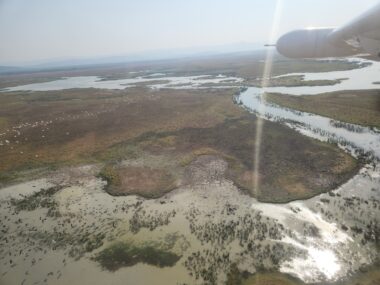On October 21, the National Health and Medical Research Council announced that they would be reviewing current PFAS guidelines for a number of PFAS chemicals including: PFOS, PFHxS, PFOA and PFBS. Gen X chemicals would also be granted a guideline level. The new guidelines will take into account recent developments in the United States where PFAS chemicals have had their guidelines substantially reduced in April. Under the proposed guidelines Australia would reduce their PFOS guideline in drinking water from 70ng/L to 4ng/L, PFHxS from 70ng/L to 30ng/L and PFOA from 560ng/L to 200ng/L. PFBS has been proposed to have a guideline of 1000ng/L.
The new proposed guidelines have profound implications in terms of what areas of Victoria at now at most risk from PFAS chemicals in drinking water.
In September FoE sent a Freedom of Information application to Melbourne Water regarding PFAS and pesticide contamination. Two months later the FoI is still being processed. Oddly enough on October 21 Melbourne Water published a new PFAS page on their website. It now appears that Melbourne Water have restarted monitoring for PFAS for the first time since 2017.
Some PFAS monitoring did occur by Melbourne Water between 2010 and 2017. PFOA was detected at 8ng/L in 2011 and 0.11ng/L at the Yarra River offtake to Sugarloaf Reservoir in August 2015.
Melbourne Water currently test for PFAS at seven locations. Two sites in the Yarra Ranges, two sites in the Tarago catchment, one site near Maroondah catchment, one site in the mid-Yarra catchment and one site near Yan Yean Catchment. Recent testing carried out after August 2024 has detected no PFAS chemicals.
Melbourne Water tests for three PFAS chemicals PFOS, PFHxS and PFOA. The limit of reporting used by Melbourne Water is 20ng/L meaning that detections below this amount, which would be the bulk of detections, will not be found.
Recent testing for PFAS in Sydney shows that Sydney Water are testing at limits 20 times less than that done by Melbourne Water. 64% of positive test results carried out on June 24 by Sydney Water were under 20ng/L. On September 10 2024, PFAS was detected at 0.7ng/L 45 metres under the water surface of Sydney's Warragamba Dam, Sydney's main drinking water source. If a similar issue was occurring in a reservoir in Melbourne, Melbourne Water would be none the wiser.
It would appear that possibly the highest PFAS loads in a domestic water supply is in the Moorabool River catchment. The Murray River near Yarrawonga also appears to be of most concern.
In the FoE blog on PFAS in Victorian drinking water supplies published two years ago, using the 2017 Australian Drinking Water Guidelines, only one breach to the Australian Drinking Water guidelines was located. That incident was at Wangaratta from PFAS in the Ovens River detected by North East Water in March 2018.
Whereas in comparison to the October 2024 proposed Australian Guidelines, there would be 18 breaches, from the same data source, albeit mostly in raw water, with over a third of the top 20 occurring at the Moorabool Water Treatment Plant which provides areas of Geelong with drinking water.
If one compiles all Victorian PFAS detections, where a PFAS detection at ADWG PFAS guideline = 100, then the 2024 proposed revisions to the ADWG's PFAS guidelines show that Moorabool WTP* is easily the most risky water supply in Victoria in terms of PFAS contamination. This is not to say that Geelong residents have been drinking dangerously high levels of PFAS, it means that the raw water supplying much of the city has been contaminated with PFAS levels which will soon be considered to be unsafe.
57% of Barwon Water results between 2017 and 2024 at Moorabool came in <0.002ug/L, 43% came in as positive. 5 of these incidents were above the proposed new PFOS guideline. What is the source of the pollution? Has Barwon Water or the State Government investigated?
Moorabool Water Treatment Plant is located 30km north west of Geelong and supplies drinking water to areas of Geelong with a combined population of ~180,000. About 94% of these people would also receive drinking water from other sources, meaning that about 11,000 people would receive their drinking water solely from Moorabool WTP. Was Moorabool WTP designed to filter out PFAS chemicals?
Moorabool Treatment plant is located about 25km south west of the notorious fire training facility of Fiskville where PFAS and other contaminants were detected at very high levels some years ago. If Fiskville is not the source of the PFAS chemicals in the Moorabool River Catchment, where is the PFAS coming from? Note too that the ecological guideline for PFOS in freshwater has a 99% trigger level of 9.1ng/L. Water coming down the Moorabool catchment breached the ecological guideline three times in four years. What is PFAS doing to the ecology of the river?
For more information contact: Anthony Amis 0425 841 564



